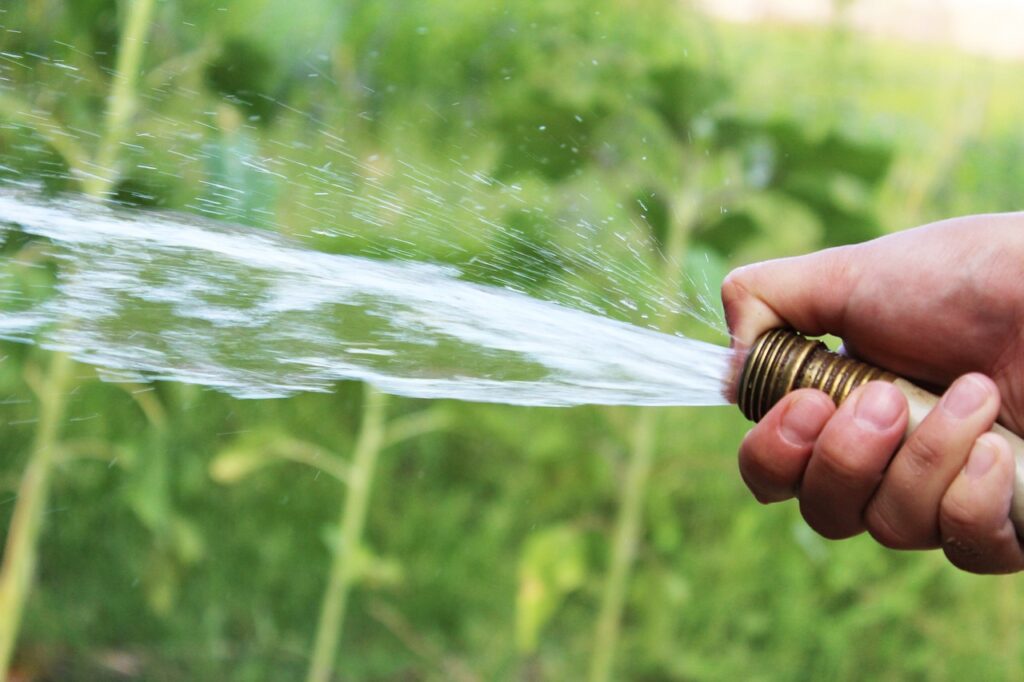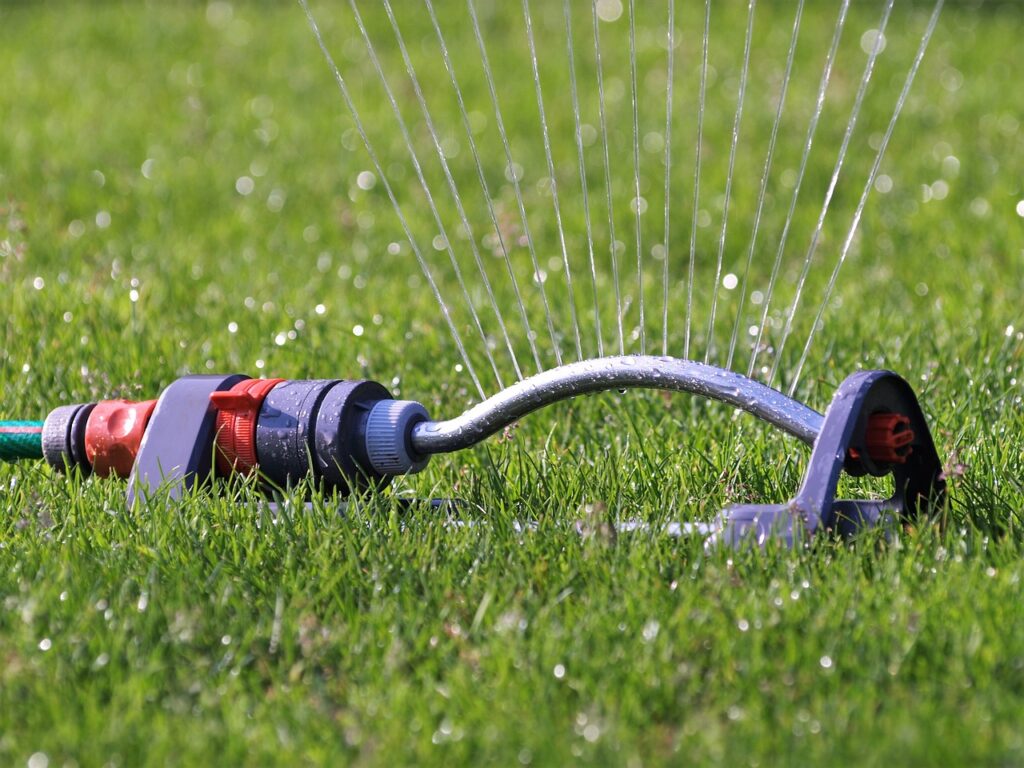Permaculture Irrigation Systems strive to conserve as much water as possible by several irrigation techniques that maximize the efficiency of water distribution.
Introduction
Small-scale permaculture water distribution and irrigation systems are essential for sustainable gardening practices. These systems prioritize water efficiency, reduce reliance on external water sources, and promote self-sufficiency in water management.
They encompass a range of methods, including traditional tools like watering cans, domestic hose water, as well as innovative techniques such as greywater systems and rooftop rain barrels.
By integrating these systems into permaculture designs, individuals and communities can effectively meet their water needs while minimizing their impact on their environments as well as their wallets. Let’s talk about five techniques for distributing water efficiently in your garden.
Watering Cans
Watering cans are indispensable tools in permaculture gardens, playing a crucial role in efficient and targeted water distribution. These simple yet effective devices allow gardeners to have precise control over the amount of water delivered to each plant, minimizing water waste and optimizing plant health.
In permaculture, where sustainability and resource conservation are paramount, watering cans provide an eco-friendly alternative to more water-intensive irrigation methods. They allow for hand-watering, ensuring that water is directed exactly where it is needed, reducing the risk of overwatering or watering non-target areas.
Additionally, watering cans enable gardeners to closely observe and interact with their plants, fostering a deeper connection and understanding of the garden ecosystem.
With their ease of use, portability, and ability to promote water efficiency, watering cans are indispensable tools in permaculture gardens, empowering gardeners to cultivate thriving landscapes while minimizing their environmental impact.
Hose Water Distribution
Domestic hose water distribution plays a significant role in small-scale permaculture gardens, offering convenience and flexibility in irrigating plants while maintaining water efficiency.
In permaculture practices, the careful management of water resources is crucial, and a domestic hose can be utilized mindfully to meet these goals. By attaching a spray nozzle with adjustable settings, water flow can be regulated, allowing for precise targeting of plants’ root zones and minimizing water waste.
This method provides an effective means of delivering water to specific areas in the garden, ensuring that each plant receives the appropriate amount of hydration. Furthermore, by practicing strategic watering techniques such as deep root watering and mulching, the efficiency of domestic hose water distribution can be further enhanced, reducing the need for frequent watering.
Incorporating domestic hose water distribution into permaculture gardens allows for efficient irrigation while maintaining the principles of sustainability and resource conservation.

Drip Irrigation
Drip irrigation is a fundamental technique employed in permaculture gardens to provide targeted and efficient water distribution. By delivering water directly to the root zone of plants, drip irrigation minimizes water loss through evaporation and runoff, while ensuring that plants receive the necessary moisture for optimal growth.
In permaculture gardens, drip irrigation systems are designed to be low-pressure and slow-release, allowing water to seep into the soil gradually. This method promotes deep root development and reduces the risk of surface runoff and waterlogging. Drip irrigation also helps to conserve water by delivering it precisely where it is needed, minimizing wastage.
Moreover, drip irrigation is compatible with permaculture principles such as water conservation and integration. It can be combined with rainwater harvesting systems, greywater recycling, and other water-saving techniques to create a holistic and sustainable water management approach.
In permaculture gardens, drip irrigation plays a vital role in maximizing plant health, optimizing water efficiency, and fostering a regenerative ecosystem that thrives in harmony with nature.

Greywater Systems
Greywater plays a significant role in permaculture gardens as a valuable resource for irrigation and nutrient cycling. Greywater refers to gently used household water from sources like sinks, showers, and washing machines.
Instead of letting this water go to waste, permaculture gardens utilize greywater as a sustainable irrigation solution. By diverting greywater to the garden, nutrients and moisture are recycled, reducing the need for fresh water and minimizing the strain on municipal water supplies.
Greywater can be filtered and treated through simple systems, ensuring that it is safe for plants and the environment. This practice not only conserves water but also promotes the efficient use of resources within the garden ecosystem.
By incorporating greywater systems into permaculture gardens, individuals can enhance sustainability, improve plant health, and contribute to a more self-sufficient and resilient approach to water management.
Managing Runoff
Managing and rediverting runoff for irrigation is a key aspect of permaculture gardens. Instead of allowing rainwater runoff to be wasted, permaculture systems aim to capture and utilize it effectively. By implementing various techniques, gardeners can harness the power of runoff for irrigation while minimizing erosion and conserving water resources.
One approach is the use of swales, which are shallow ditches dug along contour lines. Swales capture and hold rainwater, allowing it to slowly infiltrate the soil, recharge groundwater, and provide moisture for plants. This not only prevents erosion but also creates a reservoir of water that can be used for irrigation.
Another method is the creation of rain gardens or bioswales. These are designed depressions that collect and filter runoff from roofs, driveways, or other impermeable surfaces. The collected water can be stored in underground cisterns or directed to nearby planting areas, providing a sustainable water source for the garden.
Additionally, permeable surfaces such as gravel paths or permeable pavers can be used to allow rainwater to percolate into the soil, reducing runoff and contributing to groundwater recharge.
By managing and rediverting runoff in permaculture gardens, gardeners can effectively utilize rainwater, minimize erosion, and create a self-sustaining irrigation system that conserves water and nurtures the plants in a sustainable manner.
Conclusion
In conclusion, water distribution and irrigation systems in small-scale permaculture gardens are vital for sustainable and self-sufficient water management.
By incorporating techniques such as watering cans, domestic hose water, greywater systems, and rainwater diversion techniques, individuals can effectively meet the water needs of their gardens while minimizing waste and reducing reliance on external water sources.
These systems demonstrate the power of small-scale actions in creating resilient and regenerative ecosystems. By understanding the specific water requirements of plants, capturing and reusing greywater, and harvesting rainwater, small-scale permaculture gardens can thrive while conserving precious water resources.
Furthermore, these practices contribute to water conservation efforts on a broader scale, promoting ecological sustainability and resilience. By embracing water distribution and irrigation systems in small-scale permaculture gardens, we can play an active role in creating a more sustainable future for ourselves and our planet.





